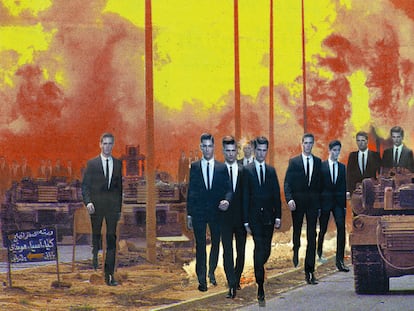Frida Kahlo: Her accident, inspiration and legacy in the art world
The Mexican painter created over 150 works and was inspired by great artists such as Bosch and Brueghel the Elder
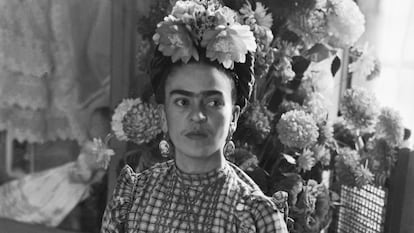

Frida Kahlo is one of Mexico’s most famous artists and has become a pop culture icon. Her story is told in paintings, international exhibitions, books and even in souvenirs sold everywhere. Her home and studio were turned into museums.
Born in Mexico City, in the well-known Casa Azul [Blue House], she was the daughter of German photographer Wilhelm Kahlo (Guillermo Kahlo) and Matilde Calderon. The painter wrote in her diary that she was born in 1910, so she called herself a daughter of the Mexican Revolution; however, her date of birth is really July 6, 1907. According to the Frida Kahlo Museum, the artist remembered that she gave aid in the Casa Azul to those injured in the Mexican war.
Her father was a photographer and painter who served as an example for the artist; the two became extremely close. Guillermo Kahlo suffered from epileptic episodes, and when Frida suffered from polio at six years old, her father was the one who took care of her. The same was true when she was involved in the bus accident that shaped her life and caused her spinal ailments. Frida describes him in her diary as an example of tenderness, hard work, and, above, all understanding.
Kahlo was the third of four sisters. She wanted to study medicine and was one of 35 women accepted by the National Preparatory School, along with 2,000 men. During those years at school, she met Alejandro Gómez Arias, who in addition to being her partner, was the one with whom Kahlo discussed and became interested in social classes and the people’s uprising. Both belonged to the student group “Las Cachuchas” [the Caps]. At the same time, she spent her free time in her father’s studio, where she learned to color photographs with a brush.
Kahlo was always politically active, even before she gave refuge to the Russian politician and leader Leon Trotsky. After the Spaniard Ramón Mercader assassinated Trotsky, Frida Kahlo and her sister Cristina Kahlo spent two days in jail following hours of interrogation.
The accident that shaped her art
On September 17, 1925, as Alejandro and Frida were traveling by bus, a streetcar collided with them. An iron pipe pierced her hip and pelvis. The accident was so severe that Kahlo had to be wrapped in a cast and bandages for her multiple fractures to heal.
Due to her injuries and paralysis, she had to remain in bed. She was hospitalized for a month at the Red Cross. That was when she began to paint more frequently. Her friends praised her work, and she gave them her canvases, which weren’t valuable at that time. The painter did countless self-portraits that would later become the essence of her work.
Three years after the accident, in 1928, Frida was finally able to leave her bed. She began to frequent political debate circles where she met the photographer Tina Modotti and Diego Rivera, who was already a renowned painter by then.
An anecdote about the couple’s first encounters says that Frida Kahlo sought out Diego Rivera to criticize his paintings. After Diego asked her to paint a picture, the famous artist told her that she had talent. They were married only a year after they met.
Motherhood
The artistic couple lived in Cuernavaca, in the State of Morelos. Because of her accident, there was a high likelihood that Kahlo would have a high-risk pregnancy and die. In August 1929, when she got pregnant, Kahlo decided it was best to have an abortion.
In a second pregnancy, the doctors gave her the option of having a cesarean section, but she lost the baby. After that, she painted an unfinished painting in which she portrays Diego, the medical procedure and herself in the center with a baby in her womb. In 1934, she had a third miscarriage. That same year, she was also hospitalized to have her appendix removed and to heal ulcers on her diseased foot.
The impossibility of having children is a recurring theme in her work. The artist is in pain and portrays fetuses and unborn children that reflect her constant thoughts. The work Moses, which received an honorable mention from the Mexican Presidency and the Ministry of Public Education, shows two infants in the center, one before birth and the other just after. Her work Henry Ford Hospital, which was initially titled Lost Desire, also reflects the trauma of her second miscarriage.
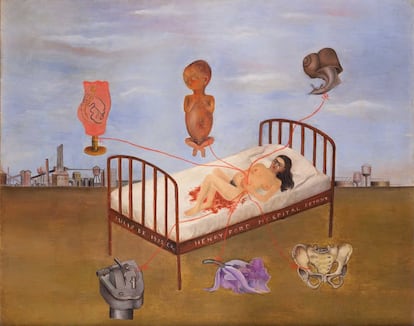
Her legacy in art
With over 150 works to her name, the painter is known for her self-portraits and scenes. André Breton tried to classify them as surrealist, but Frida Kahlo denied that label, saying that they were simply scenes from her life. Breton was so impressed with her that he offered to promote Kahlo’s art worldwide.
Her artwork was exhibited for the first time at the National Autonomous University of Mexico’s Art Gallery. Her first solo exhibition was held at the Julien Levy Gallery in New York in 1938, under the curatorship of André Breton; there, she managed to sell several of her works and received very positive reviews in the media.
A year later she exhibited in Paris, also at the invitation of André Breton, as part of the Mexique exhibition at the Colle Gallery. There, she learned more about the European avant-garde and the surrealist’s close associates. One of them, Marcel Duchamp, opened the doors of the Renou et Colle gallery, where she exhibited her work alongside Manuel Álvarez Bravo’s photographs.
Art collector Peggy Guggenheim also invited her to exhibit in London; however, the imminent outbreak of World War II in 1939 caused Kahlo to leave Europe and return to Mexico. The war broke out in September, six months after Guggenheim’s offer.
The Louvre acquired her self-portrait The Frame, and in 1941 she exhibited her work at the Contemporary Institute of Art in Boston. A year later she presented her work at the Museum of Modern Art (MoMA) in New York, where Self-Portrait with Cropped Hair is now on display.
It was not until 1953 that Frida Kahlo’s work was exhibited individually in Mexico. Organized by photographer Lola Álvarez Bravo, Kahlo arrived at the Contemporary Art Gallery in an ambulance and participated while lying in a hospital bed. Her health was extremely fragile that year, but the painter did not want to miss the exhibition. By that time, Kahlo had already taught at the “La Esmeralda” National School of Painting and Sculpture; exhibited at the Philadelphia Art Museum and at the Art of This Century Gallery alongside other women artists under the curatorship of Peggy Guggenheim; and won an honorable mention from the Presidency of the Republic and the Secretary of Public Education for her work Moses.
Frida Kahlo’s inspiration
In her diary, the painter talks about Hieronymus Bosch and Brueghel the Elder, who, perhaps, were the true inspiration for her paintings: “Hieronymus Bosch died in Hertongenbosch in 1516, wonderful painter. Perhaps he was born in Aachen. I am very disturbed that almost nothing is known about this fantastic man of genius. My beloved, magnificent Brueghel, the Elder, lived almost a century later…”
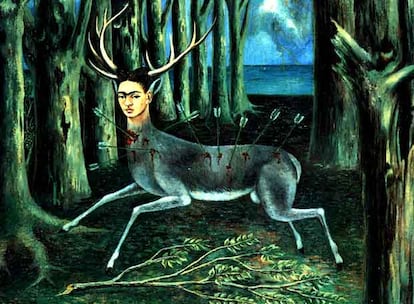
Her last days
Frida Kahlo died on July 13, 1954. Before her death, she had already undergone surgery for her spinal problems. In 1950, she had seven operations and two toes on her right foot were amputated. During the last years of her life, she remained bedridden. Friends and colleagues from the worlds of art and show business, such as Dolores del Río, María Felix and Jorge Negrete, visited her frequently, and she continued painting and selling her work.
The last words she wrote in her diary were: “Thanks to the nurses, the orderlies, the waiters and waitresses of the English Hospital. Thanks to Dr. Vargas, to Navarro, to Dr. Polo and to my willpower. I am looking forward to my departure and I hope I will never come back.”
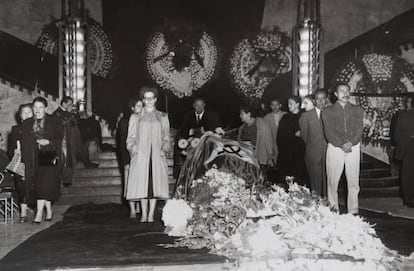
Sign up for our weekly newsletter to get more English-language news coverage from EL PAÍS USA Edition
Tu suscripción se está usando en otro dispositivo
¿Quieres añadir otro usuario a tu suscripción?
Si continúas leyendo en este dispositivo, no se podrá leer en el otro.
FlechaTu suscripción se está usando en otro dispositivo y solo puedes acceder a EL PAÍS desde un dispositivo a la vez.
Si quieres compartir tu cuenta, cambia tu suscripción a la modalidad Premium, así podrás añadir otro usuario. Cada uno accederá con su propia cuenta de email, lo que os permitirá personalizar vuestra experiencia en EL PAÍS.
¿Tienes una suscripción de empresa? Accede aquí para contratar más cuentas.
En el caso de no saber quién está usando tu cuenta, te recomendamos cambiar tu contraseña aquí.
Si decides continuar compartiendo tu cuenta, este mensaje se mostrará en tu dispositivo y en el de la otra persona que está usando tu cuenta de forma indefinida, afectando a tu experiencia de lectura. Puedes consultar aquí los términos y condiciones de la suscripción digital.
More information
Archived In
Últimas noticias
There is as much life left to discover on planet Earth as that which is already known
Dozens presumed dead, around 100 injured in fire at Swiss Alps bar during New Year’s celebration
Is porn for women different from conventional porn? We spoke to those who make it
Cartagena de Indias is sinking: What can the city do to mitigate it?
Most viewed
- Reinhard Genzel, Nobel laureate in physics: ‘One-minute videos will never give you the truth’
- David King, chemist: ‘There are scientists studying how to cool the planet; nobody should stop these experiments from happening’
- Sinaloa Cartel war is taking its toll on Los Chapitos
- Oona Chaplin: ‘I told James Cameron that I was living in a treehouse and starting a permaculture project with a friend’
- The Interoceanic Train, the Mexican alternative to the Panama Canal

